How to finish a bath: laying ceramic tiles, liquid wallpaper, decorative plaster and other finishing methods
Planning a major overhaul in the apartment? This means that you will have to think about how best to finish the bathroom so that it is beautiful, reliable and relatively inexpensive.
I must say that the history of the operation of bathrooms has several centuries. Of course, during all this time, various methods of finishing such premises were tested everywhere.
Historically, some materials for cladding rooms with excess moisture were considered impractical and impractical, while other materials were recognized as the best solution.
Why is this happening, and what methods of cladding should be chosen for a particular case?
Finishing work methods
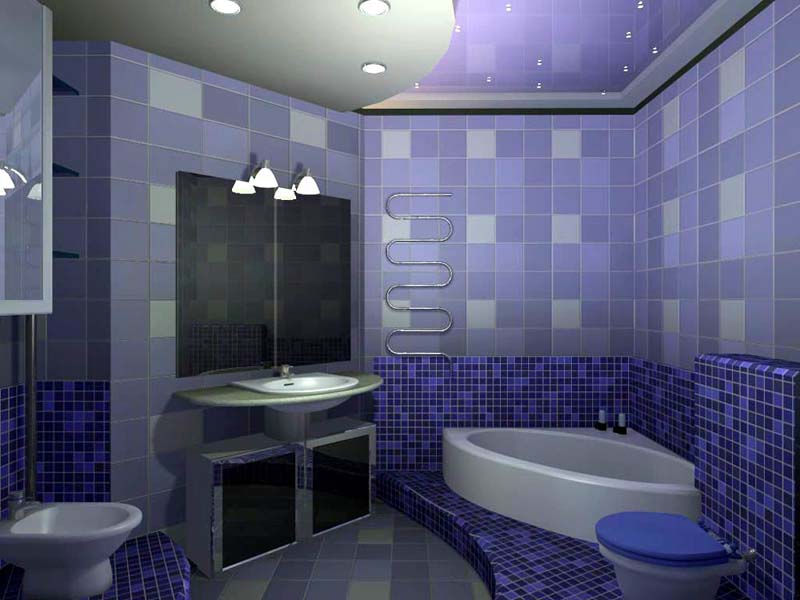
In the photo - a stylish combination of ceramic tiles with different sizes
Traditionally, walls and floors in rooms with excessive moisture were finished with glazed ceramic tiles. As a rule, smooth tiles were installed on the walls, and matte tiles on the floor in order to exclude the possibility of falling.
But the question is, how can you decorate a bathroom besides tiles, and are there any more original ways?
There are such ways and among them we note the following:
- the use of liquid wallpaper;
- use of decorative plaster;
- installation of wall panels.
Let's take a closer look at these finishing methods.
Laying ceramic tiles
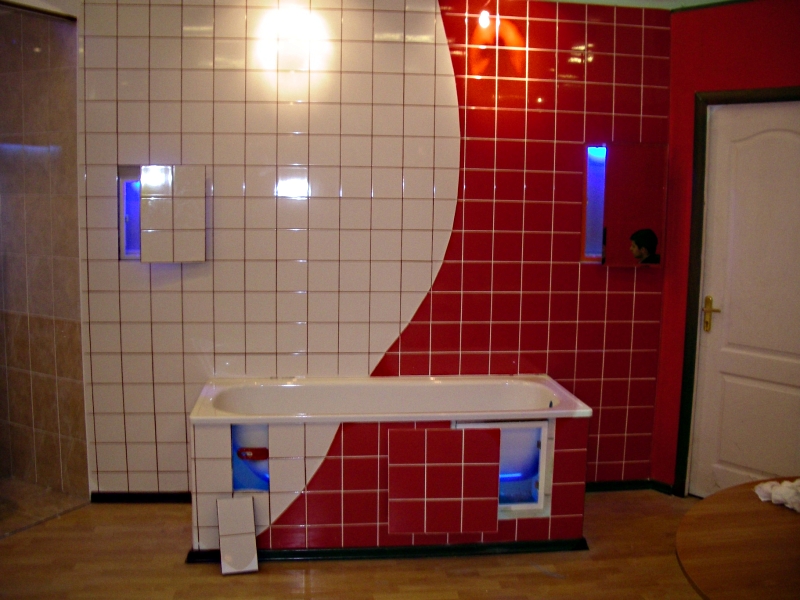
If the question is how to finish the bathroom so that the result is the most durable, choose ceramic tiles. Such a finishing material is equally hydrophobic and resistant to mechanical stress.
Important: When choosing a tile, it is necessary to take into account that there is a floor and wall modification. The difference in this case lies in the thickness, and, consequently, in the strength of the finishing material.
In addition to the tile itself, materials will require:
- special glue;
- cruciform plastic spacers;
- grout.
Of the tools you will need:
- a clean plastic container for stirring the glue;
- perforator with a nozzle for mixing;
- metal notched trowel;
- medium-sized trowel;
- rubber mallet;
- water level;
- tile cutter or grinder with the appropriate disc.
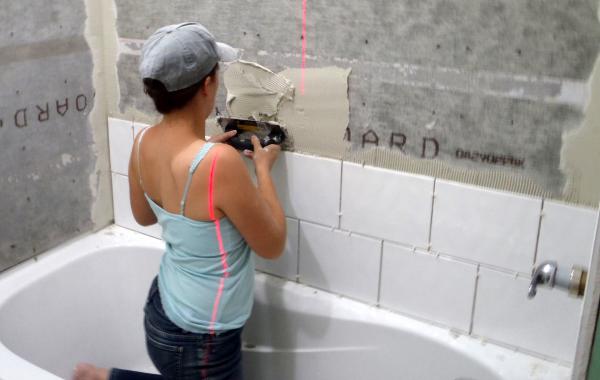
The instructions for finishing work are as follows:
- We prepare the surface of the base. To do this, the old coating is removed and the condition of the surface is assessed.
The easiest way is to tap the surface - this way you can determine the presence of voids. If there are any, the baying fragments are dismantled and the resulting recesses are puttied with a composition similar to that used in the construction of the base.
Then the surface is leveled so that the level difference is no more than 1 cm.
Important: differences of more than 1 cm, if they are not aligned in a timely manner, will result in an excess consumption of glue, as a result of which the price of finishing the bathroom will increase.
- Preparing glue. Glue is prepared in accordance with the manufacturer's recommendations. The package contains the recommended doses of water and mixture, which should be observed to achieve the best results.
Tip: We prepare the glue by pouring the mixture into the water, and not vice versa. This is an important requirement, non-observance of which can lead to a deterioration in the quality of the finished result.
- The glue is thoroughly mixed until a homogeneous consistency is formed, after which we let it settle.
Lay tiles on the wall.
- We measure 1.3 tile widths from the base of the floor and nail a horizontal bar the length of the entire wall. We wet the wall with water from a spray bottle and apply a layer of glue 1-1.5 cm thick with a notched trowel.
- We apply the tile close to the nailed bar and press it firmly. We remove excess glue. We apply a water level to the tile and check the degree of perpendicularity to the horizon.
- If one edge of the tile protrudes more than the rest, we take a mallet and level the surface with gentle blows.
We also install tiles around the entire perimeter of the bathroom. After that, we beat off the starting bar and lay the first row.
Important: Do not forget to insert spacers between adjacent tiles.
Lay tiles on the floor. In principle, the instructions are about the same as for wall mounting, but everything is much simpler, since the facing material will not slide down.
At the end of the work, we carry out grouting and clean the surfaces from contamination.
Laying liquid wallpaper
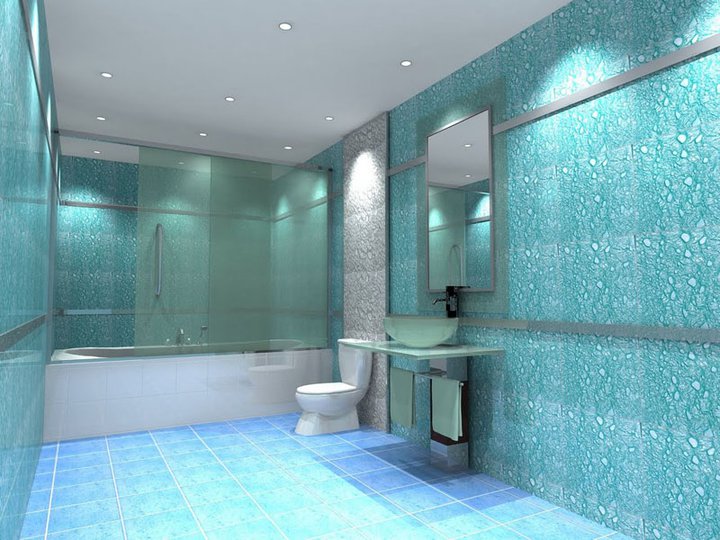
If the question of how to decorate a bathroom other than tiles is still relevant, pay attention to liquid wallpaper. This type of coating is an excellent solution for use in rooms with excessive humidity, as it has no seams, and therefore is not very susceptible to water ingress.
This coating consists of natural cellulose fibers and a binder. The natural components used in this coating are completely environmentally friendly.

Liquid wallpaper is a relief coating, which is characterized by:
- ease of application;
- durability;
- ease of dismantling;
- hydrophobicity;
- resistance to sudden changes in temperature indicators;
- antistatic;
- resistant to mold and other microorganisms.
Applying liquid wallpaper is a multi-stage complex work. At the initial stage, the surface is leveled, cleaned, dedusted, primed and dried. While the surface of the walls dries, you can begin to prepare the solution.
It should be borne in mind that one standard package of the mixture weighing 1.7 kg is consumed per 5 square meters of the wall with a layer thickness of 1-2 mm.
The mixture is prepared as follows:
- the contents of the package are poured into a clean plastic container;
- in addition to the main components, coloring additives are added to the solution;
- everything is poured with 6-8 liters of cold water;
- the contents of the container are thoroughly mixed until a solution with a homogeneous consistency is formed.
Application of liquid wallpaper is carried out with a sprayer or a traditional short-haired roller. Paint with a roller should be in several directions to ensure greater relief of the texture.
After complete drying (on average lasts 2 days), such wallpapers can be cleaned and even washed. However, do not forget that such a coating practically does not attract dust, and therefore caring for them is simple and will not take you much time.
The use of decorative plaster
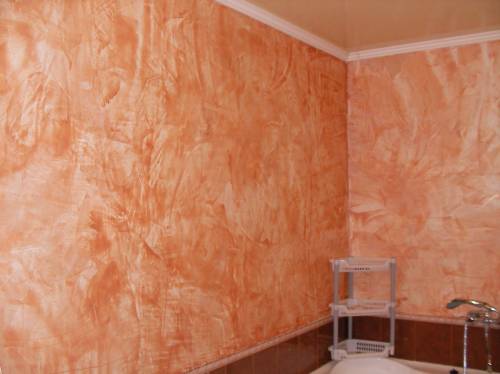
In the photo - decorative plaster
Decorative plaster is a wide range of modifications, among which you can choose moisture-resistant options that will be an excellent solution for the bathroom. The application of decorative plaster requires the performer to have experience in carrying out such work.
Decorative plaster is of two types: textured and structural. Textured plaster is a heterogeneous granular plaster mass, to which various fillers are added, such as small pebbles, wood fibers, etc.
Structural plaster is a coating made on the basis of synthetic latex, on the basis of a mixture of cement and lime or on the basis of potassium silicate.
The use of decorative plaster has a number of advantages in comparison with other wall coverings.
Among these advantages, we note the following:
- ease of application;
- excellent appearance of the finished surface;
- simplicity and convenience of regular care;
- the possibility of selecting the optimal color performance in relation to the interior of the bathroom;
- resistance to sudden temperature changes and high humidity;
- reliability and durability;
- acceptable price.
Other methods
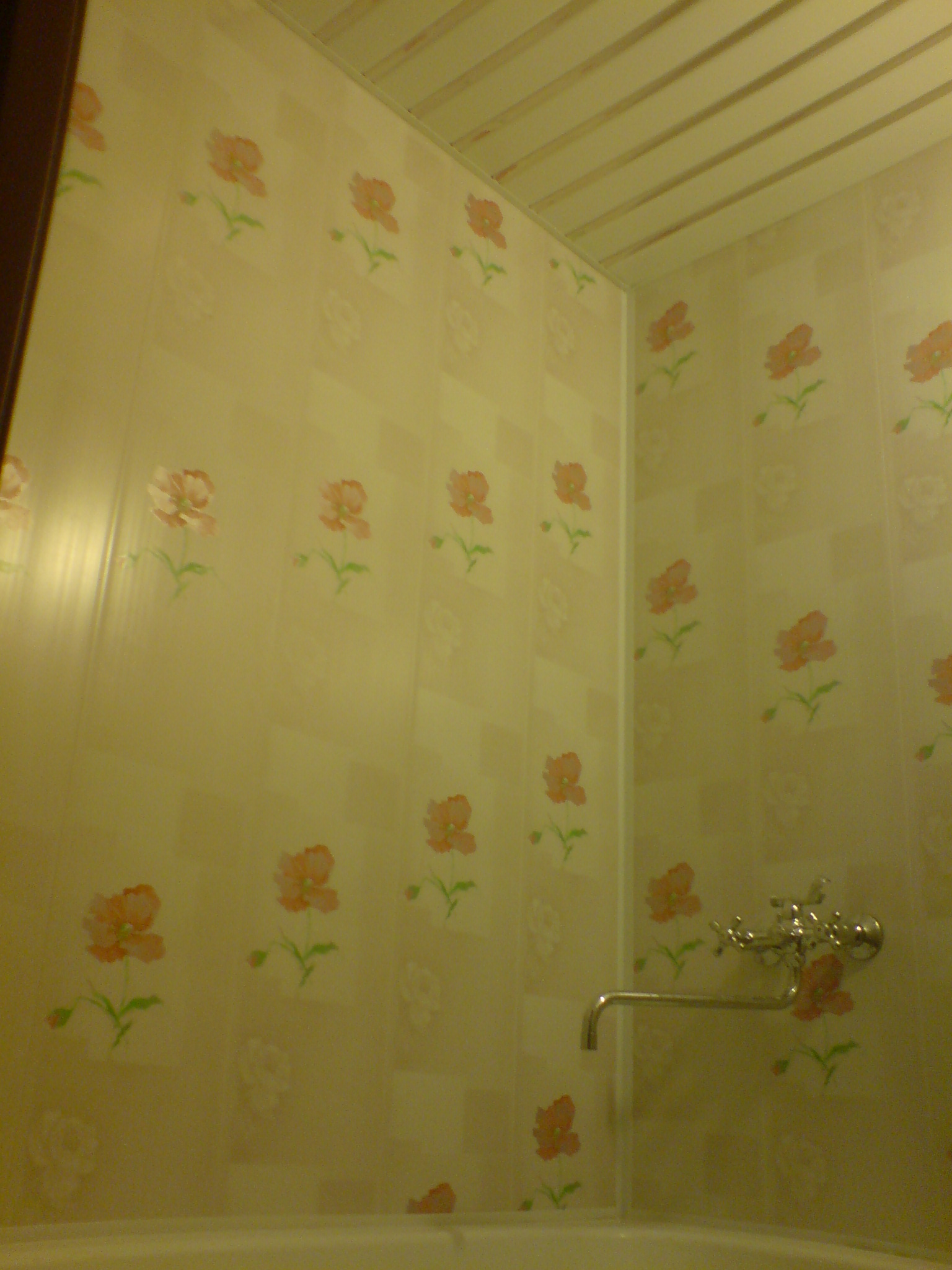
In addition to the listed methods of finishing, there are other equally popular and relevant methods. All of them are united by one property, namely, immunity to excessive humidity in the room, which is very important in relation to the decoration of bathrooms.
For example, for made of PVC or laminated plywood. Wall panels made of chipboard and OSB are not recommended, since these materials do not have sufficient hydrophobicity.
Conclusion
As you can see, bathroom decoration can be done by hand. The main thing is to purchase the highest quality materials, from what you can afford.
In order for the repair in your apartment to be successful, use the information provided on our portal. And in order to make the decoration in the bathroom easier, watch the video in this article.






